 |
 |
 |
| |
NAFLD AND ALCOHOL-RELATED LIVER DISEASE ARE PRIMARY DRIVERS OF CURRENT AND FUTURE CAUSES OF CIRRHOSIS AMONG WOMEN IN NORTH AMERICA
|
| |
| |
AASLD 2020 Nov 11-16
Jennifer A. Flemming1,2,3, Maya Djerboua2 and Norah Terrault4, (1)Public Health Sciences, Queen's University, (2)Ices, (3) Medicine, Queen's University, (4)Division of Gastrointestinal and Liver Diseases, University of Southern California
Background: Sex differences in the epidemiology and natural history of chronic liver diseases are well recognized . With a view towards considering sex-specific prevention and treatment, we sought to understand the contemporary epidemiology of cirrhosis and liver-related complications in women and project cirrhosis disease burden to 2040.
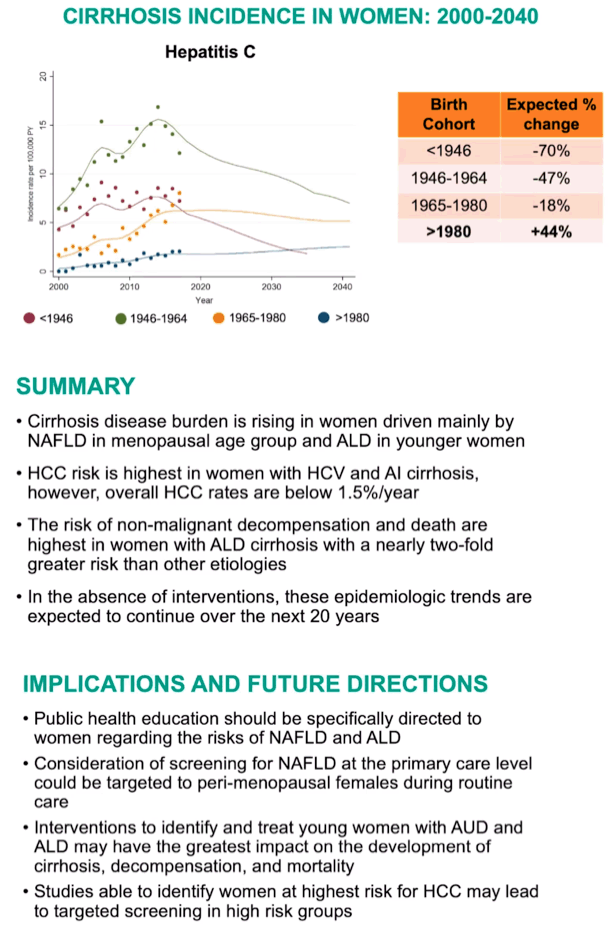
Methods: Using comprehensive administrative healthcare data from Ontario, Canada, a population-based cohort of adult female patients with incident cirrhosis 2000/01/01-2017/12/31 was identified and etiologically characterized as either hepatitis C (HCV), hepatitis B (HBV), alcohol-related liver disease (ALD), non-alcoholic fatty liver disease (NAFLD), autoimmune liver disease (AI), or Other using validated algorithms that use a combination of viral serology and diagnostic codes; and hepatocellular carcinoma (HCC) and non-malignant hepatic decompensation using validated administrative coding . Mortality was obtained from a provincial death registry . Age standardized incidence rates (IR) were calculated stratified by etiology and birth cohort (<1946, 1946-1964, 1965- 1980, >1980) with annual average percent change (AAPC) calculated with Joinpoint regression . Cirrhosis IRs from 2018-2040 were projected with age-period-cohort modelling and cubic splines.
Results: 65,217 women were included and followed for a median 5 years (IQR 2-10). Median age at diagnosis was 57 years (IQR 47-69); cirrhosis etiology was 63% NAFLD, 16% ALD, 10% HCV, 6% AI, 5% HBV, 1% Other. Cirrhosis IR increased by 33% (Figure; AAPC of 2 .5%, 95% CI 2 .0-2 .9, P < .001). The change in IR was greatest for women with ALD born >1980 (AAPC +12.8%/yr, P <.001) and NAFLD in women born 1945-1964 (AAPC 8 .4%/yr, P< .001).
HCC IR was highest in HCV (1.2%/yr) and AI (0.9%/yr) while hepatic decompensation and death were highest in ALD (IR 6%/yr and 8 .7%/yr respectively). By 2040, cirrhosis IR will increase by 8% due to increases in ALD (+42%) and NAFLD (+34%) and declines in HCV (-91%), HBV (-225%) and AI/ Other (-179%). The highest increase in cirrhosis incidence by 2040 will be for women with ALD cirrhosis born >1980 (+320%).
Conclusion: Cirrhosis disease burden in women has increased substantially driven by ALD and NAFLD, with rates of decompensation and mortality highest in women with ALD. Projections suggest that ALD and NAFLD will continue to result in increased cirrhosis incidence to 2040 with worrisome trends seen for young women with ALD. Preventive and therapeutic strategies for women with ALD and NAFLD are urgently needed.
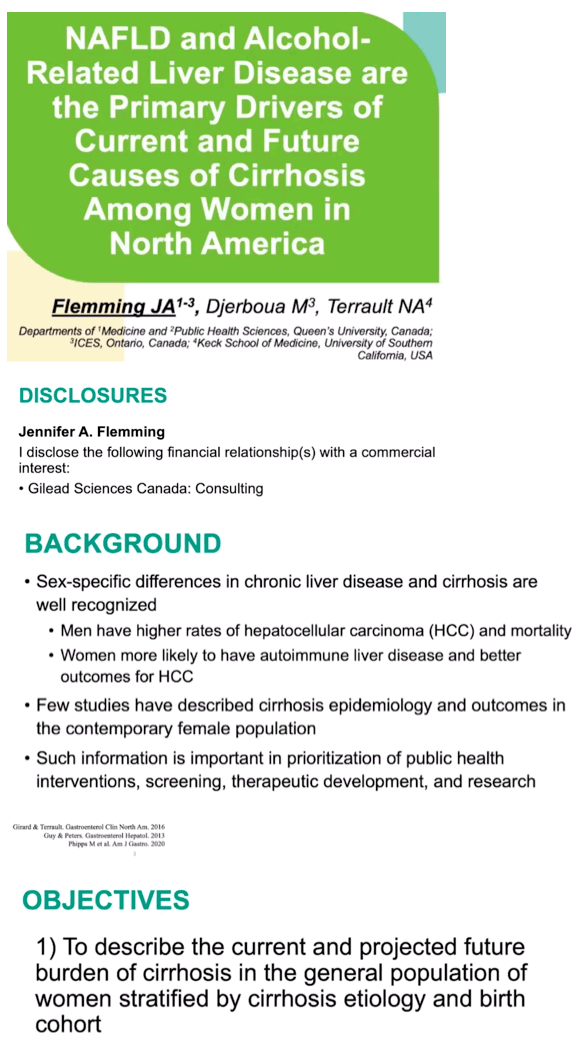
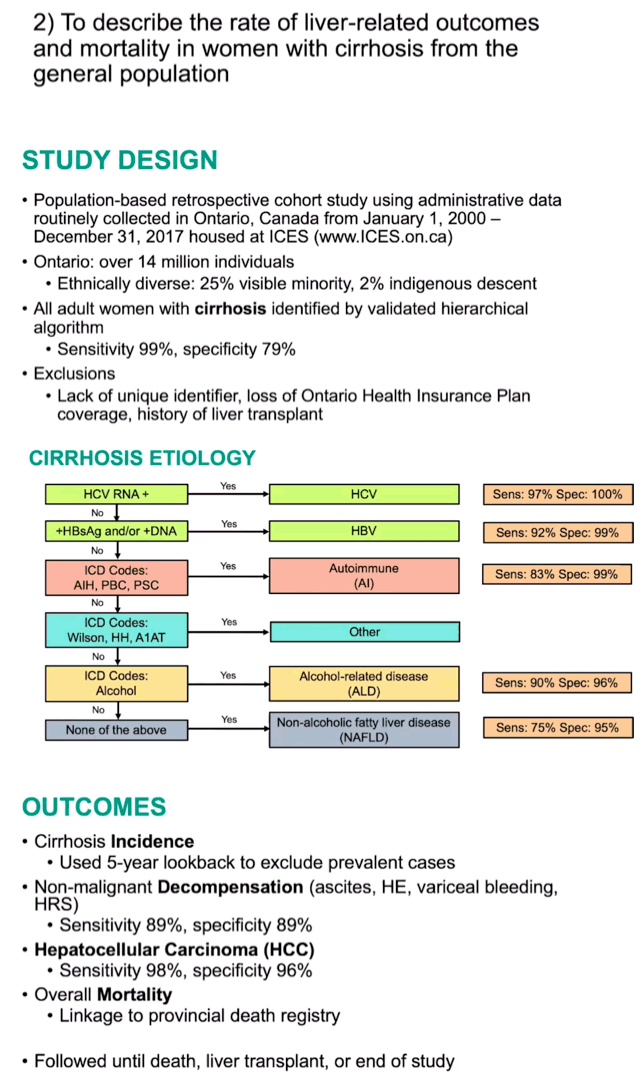
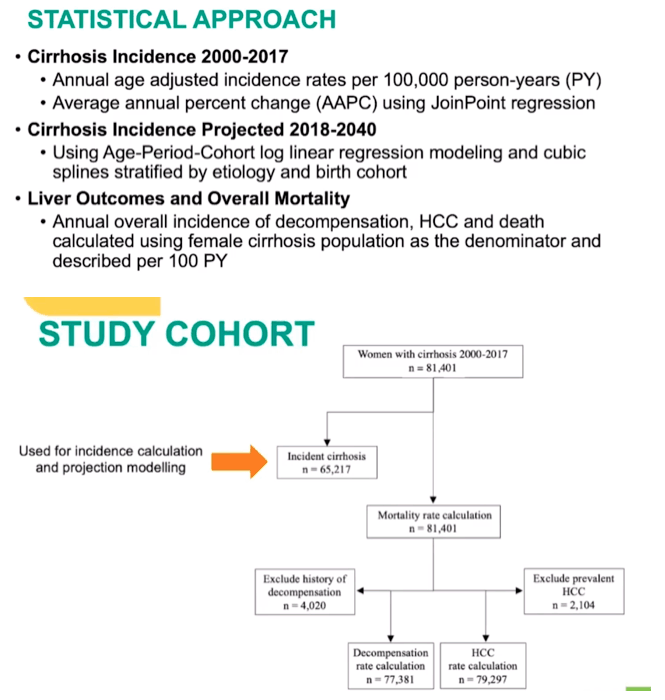
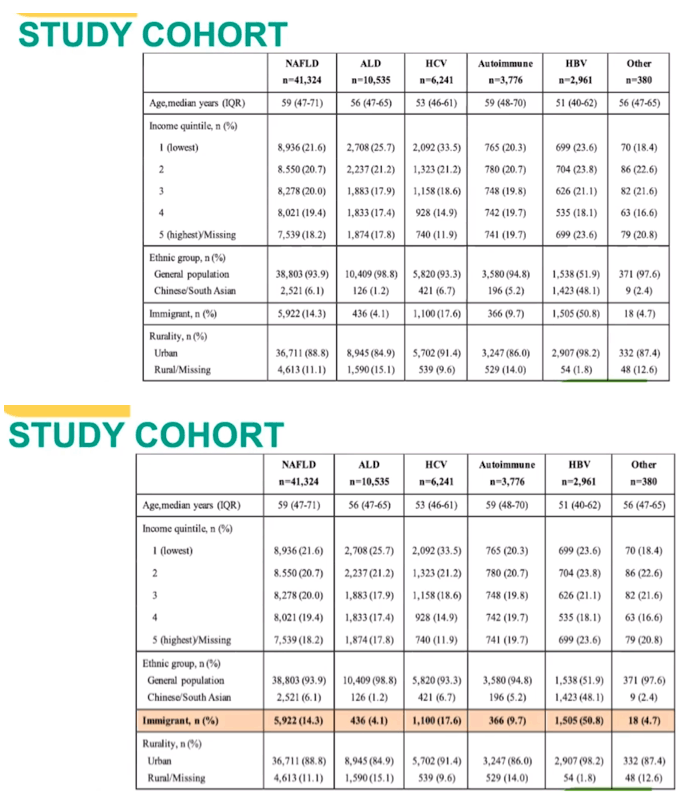
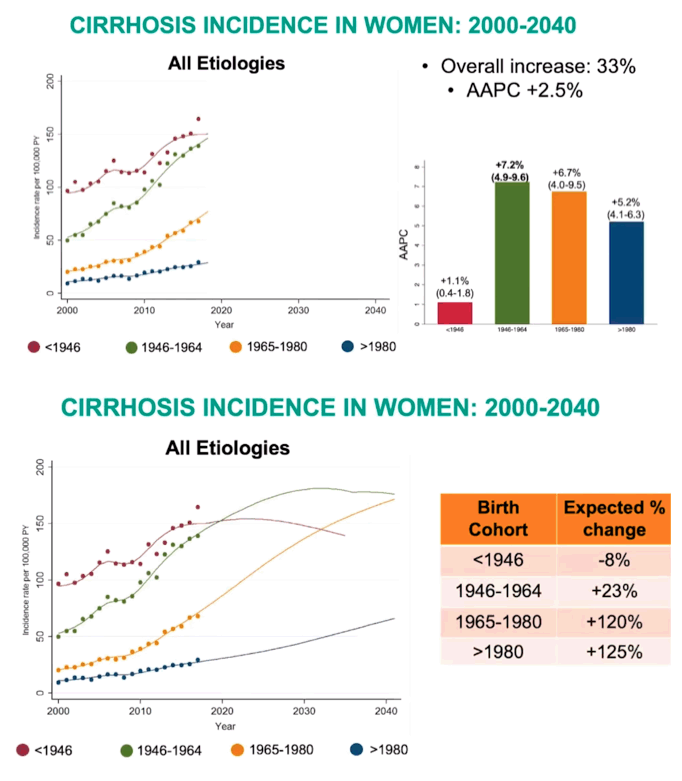
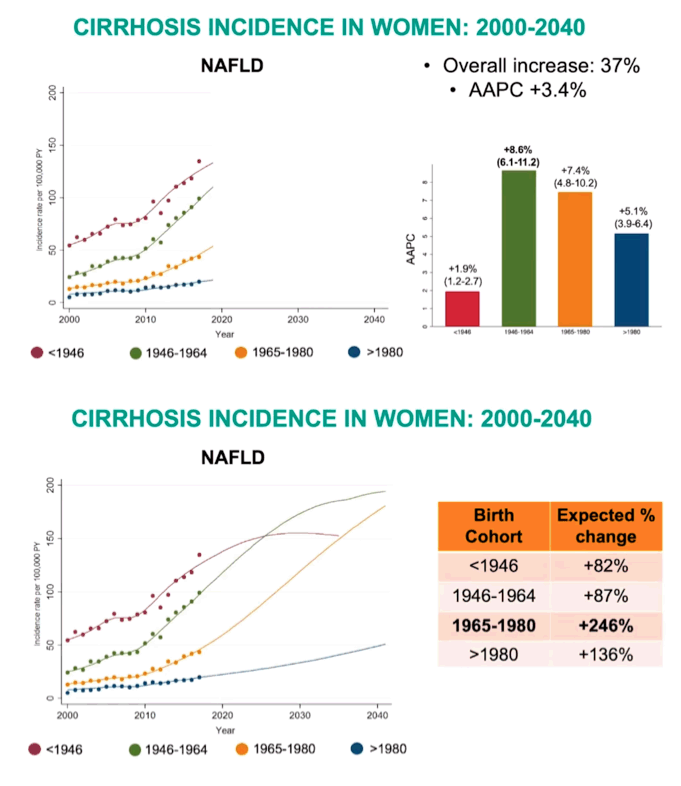
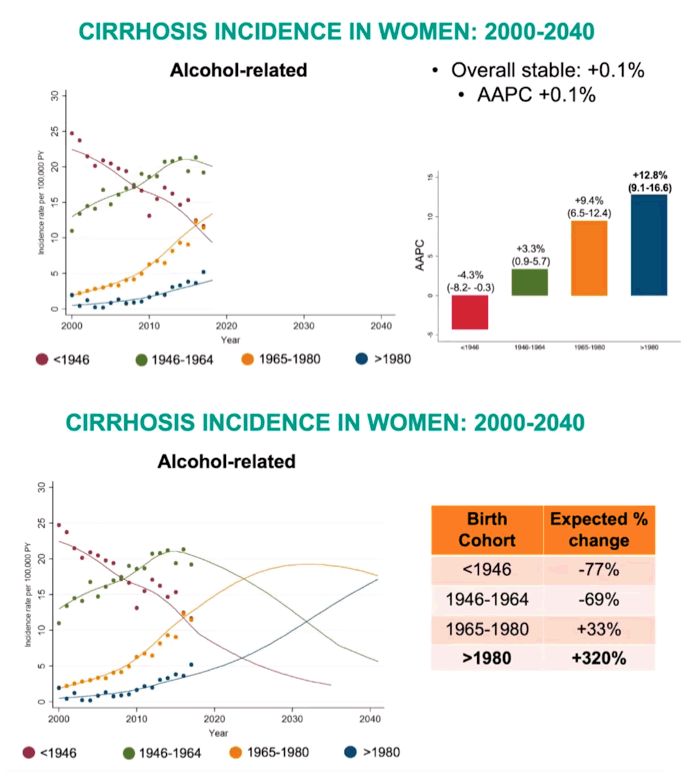
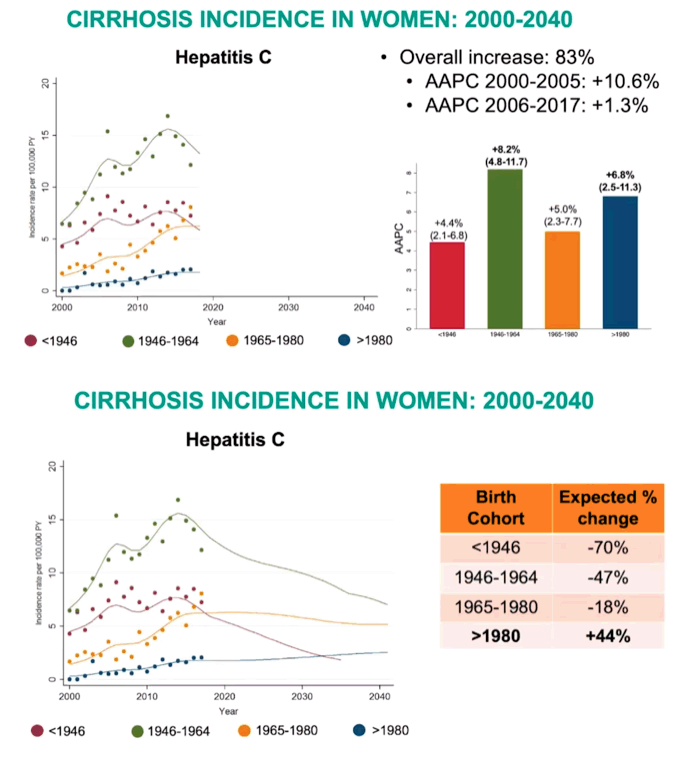
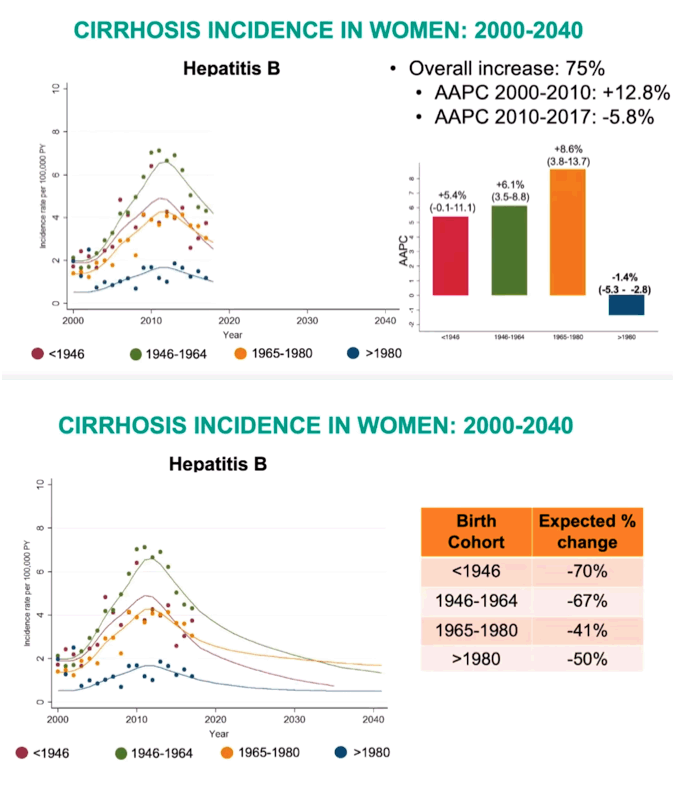
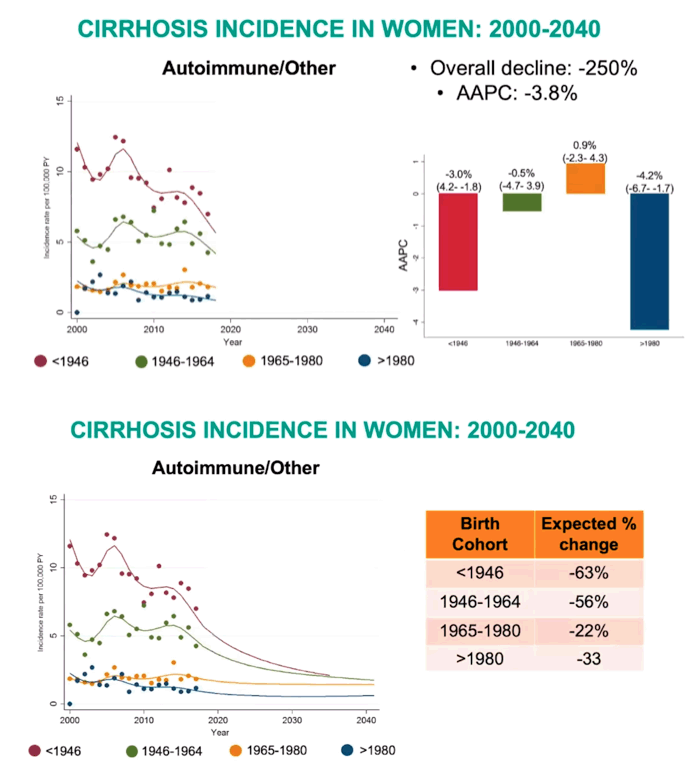
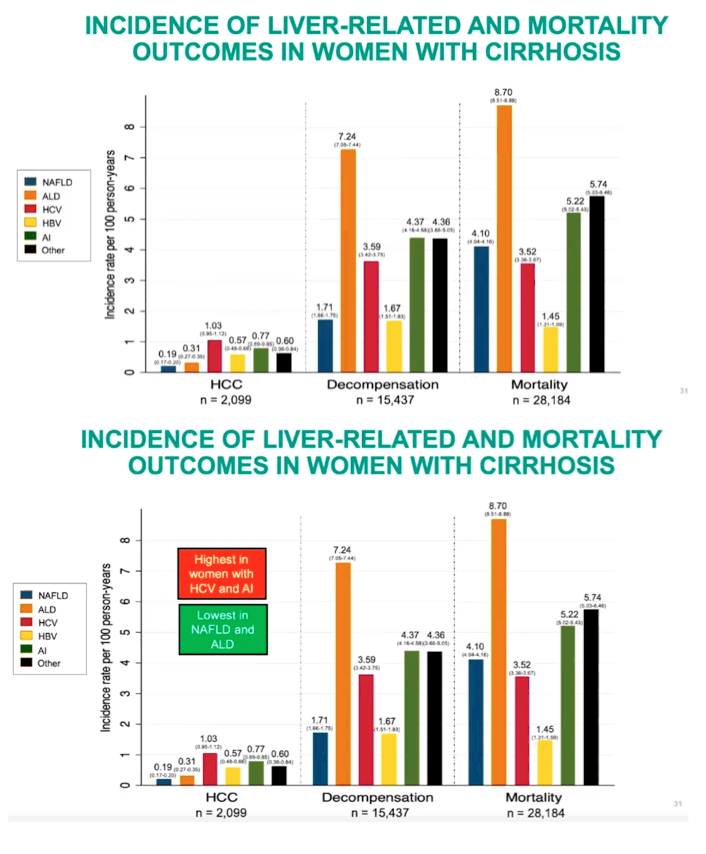
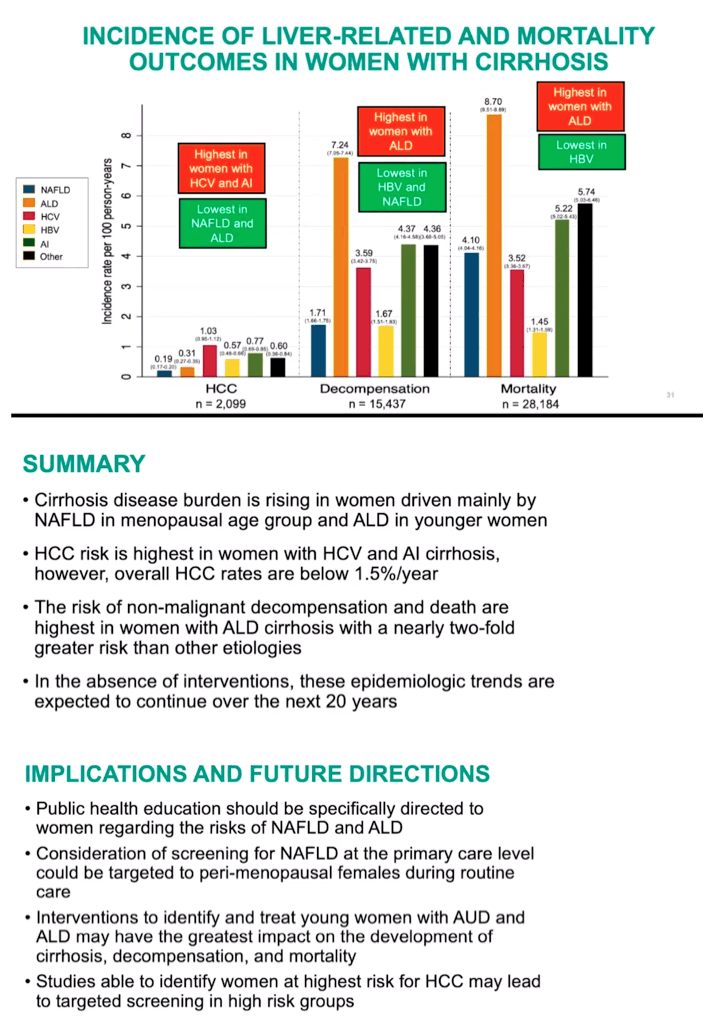
|
| |
|
 |
 |
|
|